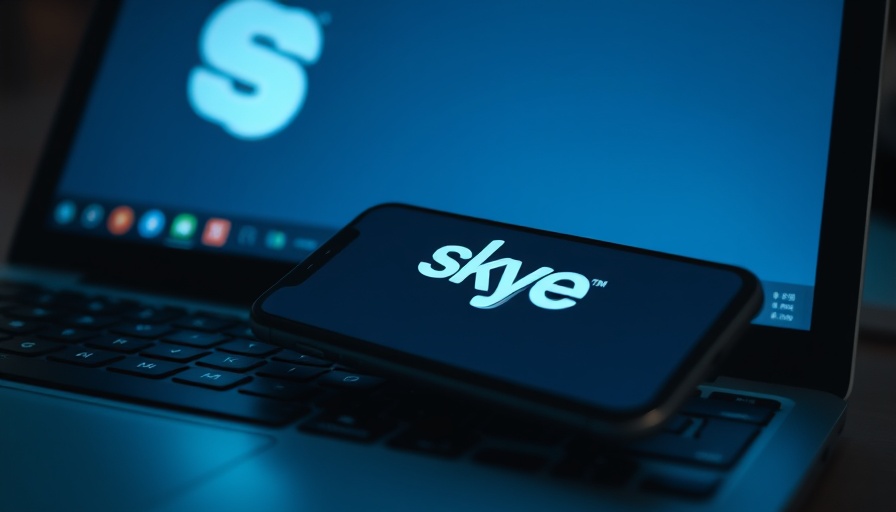
Skype Says Goodbye: What This Means for Users
After 23 years as a leading platform for video calling, Microsoft has announced the impending shutdown of Skype, set for May 5, 2025. This news has left many users scrambling to find alternatives as they prepare for a significant shift in their online communication habits. While Skype was once the go-to platform for video chats, its integration into Microsoft’s ecosystem has complicated its usability and appeal. As technology continues to evolve, it's crucial for users to explore new platforms that better meet their needs in a changing digital landscape.
Transitioning to Microsoft Teams: A Logical Step
For existing Skype users, the most straightforward transition is to Microsoft Teams, which has been designed to accommodate a more business-oriented environment. Users can easily sign into Teams with their Skype credentials, allowing for automatic migration of their contacts and chat histories. This integration facilitates not just one-on-one video calls but also supports large group meetings with up to 10,000 participants, showcasing its enhanced capabilities over the once-familiar Skype.
Exploring the Best Alternatives to Skype
While Microsoft Teams is a convenient alternative, it's not necessarily the best fit for everyone. Here are some top-rated alternatives that are emerging as popular solutions in the wake of Skype's retirement:
- Zoom: A household name, particularly since the pandemic, Zoom allows free meetings for up to 100 participants. With added features such as breakout rooms and virtual backgrounds, it's particularly business-friendly while remaining user-friendly for casual users.
- Google Meet: Integrated seamlessly with Google’s suite of tools, Google Meet offers an intuitive experience for those already familiar with Gmail and Calendar. It also features recording capabilities and live captions, catering to accessibility needs.
- WhatsApp: Known primarily for messaging, WhatsApp facilitates voice and video calls while allowing conversations with end-to-end encryption. Its widespread popularity means many users will likely already have it installed.
- Viber: If privacy is a concern, Viber provides text, voice, and video calls for free, along with robust encryption features.
- Microsoft Teams: For business users, Teams can be an ideal choice with built-in Office integrations and extensive collaboration tools.
Why Backing Up Skype Data is Important
Regardless of the chosen alternative, backing up data from Skype is essential before its final shutdown. It ensures that all valuable messages, contacts, and files are retained. Users can easily export their data through the Skype app and follow a few simple steps to secure their information.
The Future of Video Conferencing
The shutdown of Skype marks a significant moment in the evolution of online communication tools. As companies like Microsoft focus on more integrated, enterprise-level solutions, users seeking a casual or social context may find themselves in uncharted territory. You can expect emerging platforms to cater to specific market segments, offering features tailored to different user needs.
Making an Informed Choice
When deciding on a new video conferencing platform, users should consider what specific features they value most—be it user-friendliness, security, or advanced business functionalities. This reflective approach will lead to a more satisfying transition and experience in the long term. The alternatives available today far exceed what was once possible with Skype, paving the way for even richer, more engaging interactions online.
Final Thoughts: Embracing Change in Technology
As tech enthusiasts and everyday users look ahead, the moment signals not just change but opportunity—a chance to explore robust platforms designed for the modern communicator. By staying informed about technology news and embracing new features, users can maximize their experience in this digital age.
Call to Action: Take the time to explore these alternatives and see which best fits your needs before Skype's shutdown date. Be proactive and secure your data to ensure a smooth transition!
 Add Row
Add Row  Add
Add 



Write A Comment